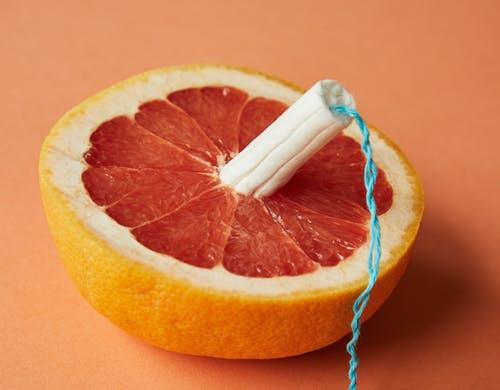1 in 20 Americans gets affected by hemorrhoids at least once during their lifetimes. It is a more commonly occurring issue in women.
For most people, swollen hemorrhoids dissolve on their own within a week. The issue arises when the anal area starts experiencing itching, pain, and bleeding. In these cases, a more proactive approach is required for treatment.
Hemorrhoids: An Introduction
For most people, the word hemorrhoid paints a dreadful picture of blood flowing everywhere in the toilet during bowel movements, but the reality is somewhat less scary. Hemorrhoids are soft bumps in the rectum that ensure a smooth exit for stool from the rectum out of the anus. On their own, they are harmless. When the anal veins become swollen, it is then that the hemorrhoids become something to worry about.
The inflamed hemorrhoids make the seemingly undaunting tasks of sitting and standing nearly impossible to perform. Not only this, but due to the extreme pain they cause, passing stool and washing your rectal area becomes very hard.
Types of Hemorrhoids
Based on their anatomical location, Hemorrhoids are classified as internal and external. Internal hemorrhoids are present inside the rectum. They are usually not painful, and many people remain unaware of their presence. On the other hand, external hemorrhoids are located in and around the anal area and are painful.
When these internal or external hemorrhoids become swollen, they retain blood in the veins. This causes a clot to form in a hemorrhoid. This clot is called a thrombose, and this type of hemorrhoid is called a thrombosed hemorrhoid. Thrombosed hemorrhoids cause the most pain and may form a hard lump in the tissue around the anus.
Common Symptoms of Hemorrhoids
Hemorrhoids may be identified by the following symptoms:
1) Symptoms of Internal Hemorrhoids
The following symptoms indicate the presence of internal hemorrhoids:
- Occasionally fresh blood can be seen in feces, on toilet paper after wiping, and sprayed in the toilet bowl during bowel movements.
- Itching around the anus
- Fecal soiling
2) Symptoms of External Hemorrhoids
A person with external hemorrhoids may have the following symptoms:
- Hard lumps may form around the anus
- Throbbing pain or discomfort around the anus
- Dark colored bleeding from the anus during and after a bowel movement
- Itching around the anus
3) Symptoms of Thrombosed Hemorrhoids
The following symptoms accompany thrombosed hemorrhoids:
- Extreme, sudden pain brought on by the change of position
- Bleeding of a darker color during or after passing stool
Rare Symptoms Accompanying Hemorrhoids
- Untreated hemorrhoids with severe bleeding can lead to iron deficiency anemia.
- In rare cases, infections accompany external hemorrhoids and require antibiotics for recovery.
- A skin tag may form when the clot in a thrombosed hemorrhoid dissolves; this patch of skin is painful to touch.
Why Do Hemorrhoids Bleed?
Irrespective of the kind of hemorrhoid you might have, they all have one common symptom: rectal bleeding.
It occurs when you strain during a bowel movement, causing the swollen hemorrhoids to rupture and start bleeding. Constipated, dry hard stools are another reason for this bleeding. The pressure of the pooled blood in the veins burst open the thrombosed hemorrhoids.
Can a Tampon Be Used for Heavy Hemorrhoids Bleeding?
You may be tempted to use a tampon for soaking up the bleeding brought on by the hemorrhoids. You are not alone in imagining that tampons will soak the rectal bleeding in the same way it absorbs the vaginal bleeding.
Research and clinical trials have been conducted on tampons for anorectal bleeding. It has been proved that tampons bring more harm than relief when inserted into the anus. Using a tampon for soaking up heavy hemorrhoidal bleeding increases the pain, even if it may absorb the blood.
Treatment for Bleeding Hemorrhoids
1. At-Home Treatments
The pain and itching caused by hemorrhoids can be treated using:
- Sitz Baths
- Ice Packs
- Heat Packs
2. Medical Treatments
Over-the-counter topical creams, ointments, and suppositories provide quick relief from pain, itching, and other mild symptoms. They usually contain witch hazel, phenylephrine, lidocaine, and hydrocortisone as some of the primary ingredients.
If OTC medicines do not work, your doctor may prescribe steroids and numbing agents such as hydrocortisone and pramoxine topical preparations. Commonly marketed drug names include Mezparox, Lidocaine, Analpram-HC, and Proctocort.
Rubber Band Ligation, Sclerotherapy, Coagulation Therapy, and Electrocoagulation are some medical interventions that may be used to treat hemorrhoids depending upon the severity of their symptoms.
3. Surgical Treatment
In cases requiring surgeries, external thrombectomy, hemorrhoidectomy, and hemorrhoidopexy are some of the procedures that can bring relief.
How to Prevent Hemorrhoids
Here are some effective ways to prevent hemorrhoids from being disruptive.
1. Balanced Diet
A balanced diet is the first step to ensure smooth digestion. Eating a diet that does not contain much fiber may contribute to constipation. As a result, you’ll have to sit on the toilet for long and strain during bowel movements. This pressure causes the veins in your rectum to swell and form hemorrhoids. Fiber-rich foods and adequate fluid intake keep the stool bulky and soft, ensuring smooth bowel movements.
2. Stay Active
Constant sitting in one position puts pressure on the rectum, which may cause hemorrhoids to rupture and start bleeding. Regular exercise keeps you active and safe.
3. Bathroom Practices
Do not hold up when you have to go to the loo. Forcing the stool to stay inside leads to added pressure, another reason for hemorrhoids bleeding.
Gently dry the anal area after every bath. Wiping can irritate and spread germs, adversely affecting your hemorrhoids.

